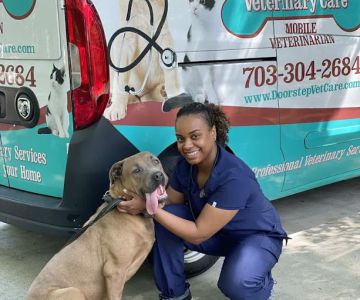How to Train a Dog to Stop Running Away
As a dog owner, one of the most concerning behaviors you might face is your dog running away. It’s a situation that can cause stress, worry, and even potential harm to your dog. I know from personal experience how heartbreaking it can be when your dog slips out the door, and you're left chasing after them, hoping they’ll return. Fortunately, with patience, consistency, and the right approach, you can train your dog to stop running away. In this article, I’ll share the best strategies that worked for me and other dog owners dealing with the same issue.
1. Understanding the Root Cause of Running Away
Before diving into training techniques, it’s important to understand why dogs run away. There are several reasons, and each dog may have its own triggers. Some common reasons dogs run away include:
- Curiosity: Dogs are naturally curious animals, and they might run off to explore their surroundings, especially if they sense something interesting outside their home.
- Fear: A loud noise, unfamiliar person, or even a sudden movement could scare a dog and prompt them to run away in an attempt to escape.
- Chasing instincts: Dogs, especially certain breeds, have strong hunting and chasing instincts, and they might run away after small animals or moving objects.
- Separation anxiety: Some dogs run away when they feel anxious or stressed, particularly if they’re left alone or separated from their owners.
Once you’ve identified the reason behind your dog’s tendency to run away, you can tailor your training approach to address the underlying issue. For example, if your dog is driven by curiosity, you might need to focus on teaching boundaries and recall. If they’re fearful, your training might focus on building confidence and reducing anxiety.

1946 S Christopher Columbus Blvd, Philadelphia, PA 19148, USA
See Details2. Training Your Dog to Recall
One of the most effective ways to prevent your dog from running away is by training them to come when called, also known as recall training. This is a fundamental skill that can help you regain control over your dog in situations where they might otherwise run off. Here are a few tips for successful recall training:
- Start in a controlled environment: Begin training indoors or in a securely enclosed space, such as your backyard, where there are fewer distractions.
- Use a consistent command: Pick a word or phrase, like “come” or “here,” and use it consistently every time you call your dog. Make sure everyone in the household uses the same command to avoid confusion.
- Reward with positive reinforcement: When your dog responds to the recall command, reward them immediately with treats, praise, or playtime. This positive reinforcement will help them associate coming when called with something pleasant.
- Gradually increase the challenge: Once your dog reliably comes when called in a controlled setting, start practicing in environments with more distractions, such as at the park or near other dogs. Gradually increase the level of difficulty until your dog responds consistently in any situation.
3. Create a Safe and Secure Environment
Sometimes, despite all your training efforts, dogs will run away simply because they have the opportunity. This is why it’s important to create a secure environment to limit the chances of your dog escaping. Some steps you can take include:
- Use a secure fence: Ensure your backyard is enclosed with a fence that’s tall and solid enough to prevent your dog from jumping over or squeezing through.
- Install a dog-proof gate: Gates with a secure locking mechanism can help prevent your dog from running out of the house when the door is opened.
- Leash walks: When walking your dog, always keep them on a leash, especially in areas with heavy traffic or potential distractions. A leash allows you to maintain control and prevent any sudden escapes.
4. Reinforcing the “Stay” Command
In addition to teaching recall, the “stay” command is an essential tool for keeping your dog in place, especially when you’re outside or near a door. If your dog is already trained to stay, they’ll be less likely to dart off when you open the door or walk past a busy street. To teach the “stay” command:
- Start with short durations: Ask your dog to sit or lie down, and give the “stay” command. Gradually increase the duration they need to stay in place before rewarding them.
- Use distractions: Once your dog is reliable in a calm environment, increase distractions gradually—such as walking away or having another person move around—to reinforce their focus and control.
- Consistency is key: Practice regularly and consistently reward your dog when they stay in place. Over time, they’ll learn that staying is a desirable behavior.
5. Addressing Anxiety and Fear
If your dog runs away due to anxiety or fear, it’s essential to address these emotional triggers. Fearful dogs may run when they’re startled by loud noises, unfamiliar people, or even other dogs. To help reduce anxiety:
- Desensitize your dog: Gradually expose your dog to the things that scare them in a controlled manner. For example, play recordings of fireworks or thunderstorms at a low volume and gradually increase it over time to help them become desensitized to the sound.
- Provide a safe space: Create a quiet, comfortable place for your dog to retreat when they feel anxious, such as a cozy crate or a specific area in your home.
- Consult a professional: If your dog’s fear or anxiety is severe, consider consulting a professional dog trainer or a veterinary behaviorist to help manage their anxiety effectively.
6. Ensuring Continued Success
Training your dog to stop running away takes time, effort, and patience. It’s important to stay consistent and use positive reinforcement to reward good behavior. Regularly practice the recall and stay commands, and maintain a secure environment to reduce the chances of your dog running off. With the right training and management, you can enjoy peace of mind knowing that your dog is safe and well-behaved.
As I’ve learned, training a dog to stop running away is a gradual process, but with the right approach, it’s entirely achievable. My dog, once a runaway escape artist, is now a much more reliable companion, and I’m proud of the progress we’ve made together. I encourage you to stay consistent and patient throughout the process—it will be worth it for the safety and well-being of your dog.










